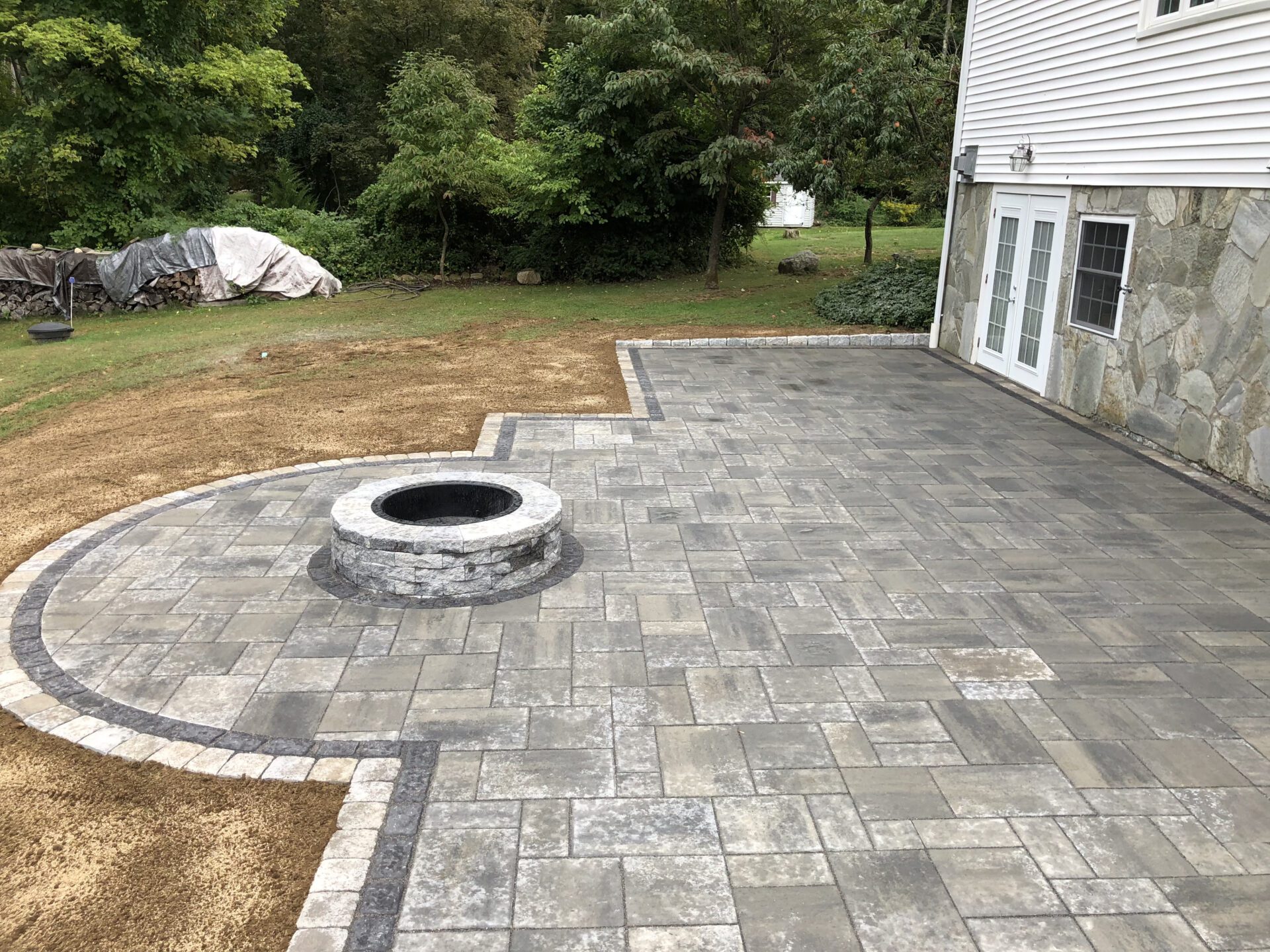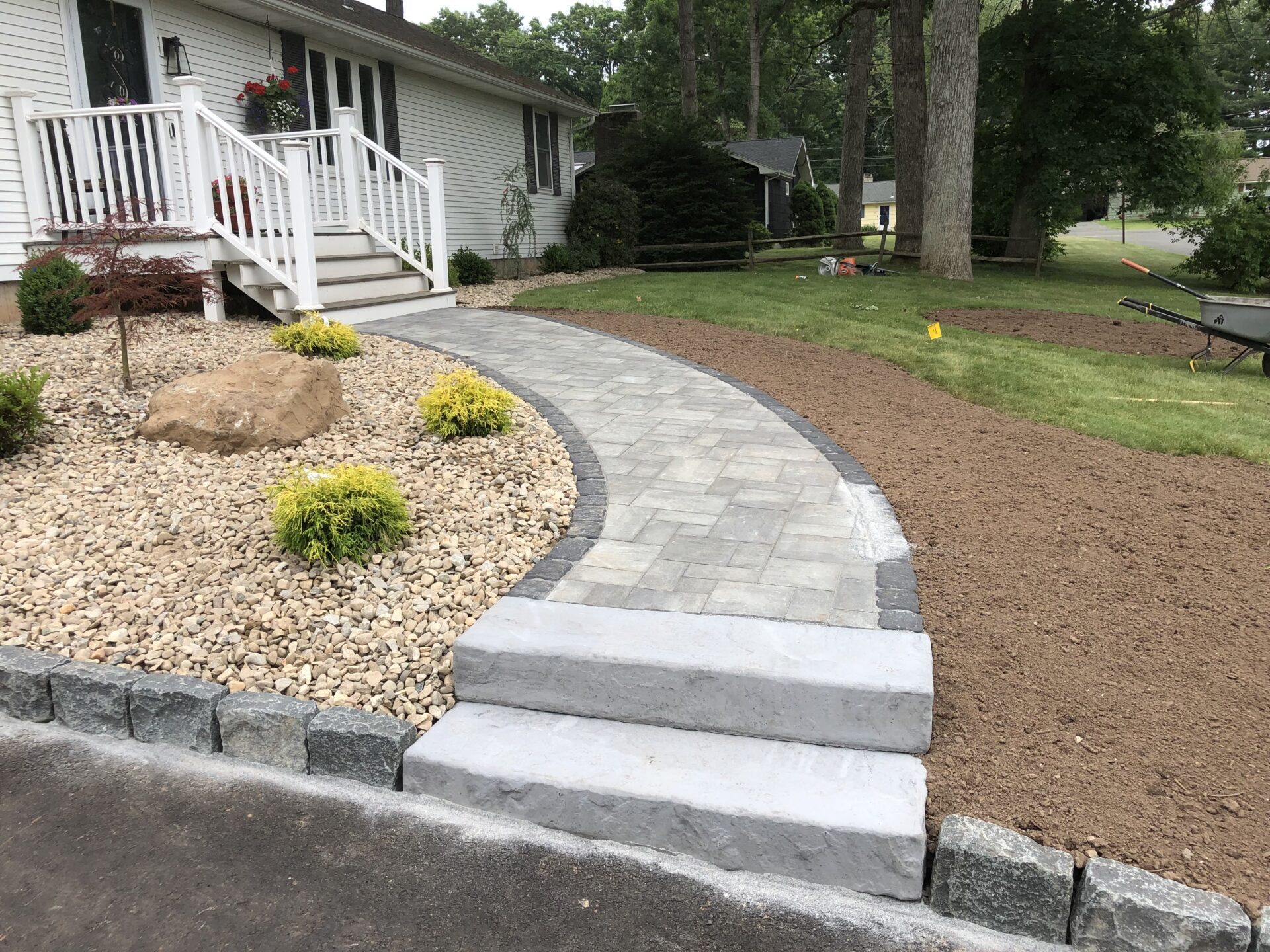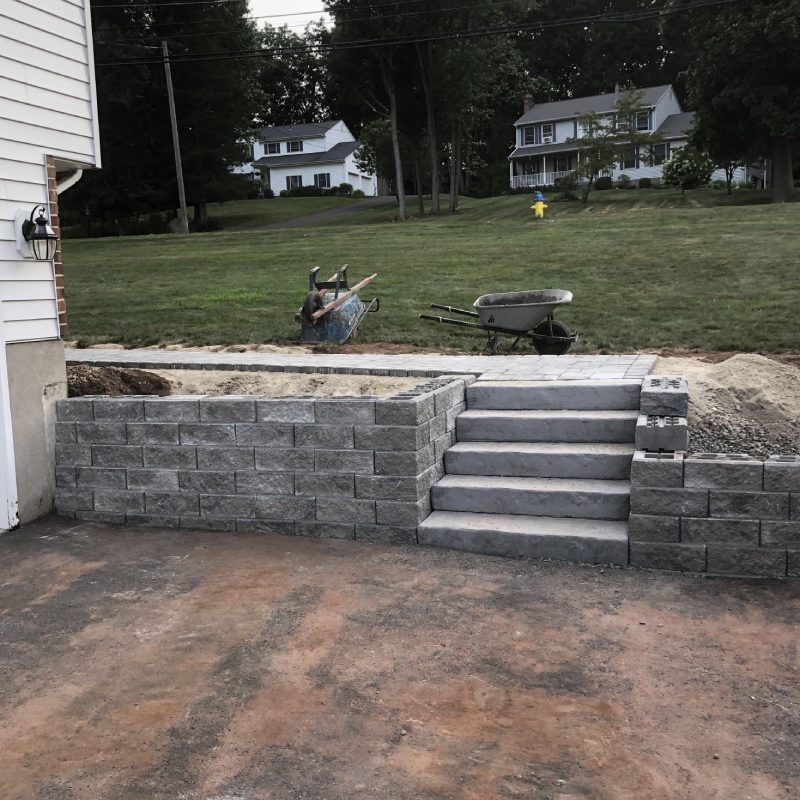A Brief History of the Timeless Art of Hardscaping
Hardscaping is not just a modern trend; it’s a practice rooted in history, dating back to ancient civilizations like the Romans and Greeks. These cultures used stone and brick to construct roads, aqueducts, and public spaces, emphasizing durability, functionality, and aesthetics. The principles of hardscaping have stood the test of time, evolving with advances in materials and techniques, yet always maintaining a focus on creating functional and beautiful outdoor environments. Over the centuries, hardscaping has transitioned from purely functional structures to intricate designs that blend practicality with artistic flair, illustrating the enduring human desire to shape and enhance our surroundings.
What is Hardscaping?
Hardscaping involves using hard materials—such as stone, brick, wood, and concrete—to design and enhance outdoor spaces. Unlike softscaping, which involves plants and soil, hardscaping focuses on non-living elements. Think of patios, walkways, retaining walls, and outdoor kitchens. These features not only beautify your yard but also make it more functional and enjoyable. The integration of these hard elements provides structure and organization to outdoor spaces, allowing for defined areas for relaxation, dining, and entertainment. Moreover, hardscaping complements the natural landscape, creating a cohesive and balanced outdoor environment.
Why Hardscaping is Valuable
Boosts Property Value
Well-executed hardscaping can significantly increase the value of your property. Features like a stunning patio, a cozy fire pit, or a stylish outdoor kitchen are not just appealing but also highly desirable in the real estate market. Prospective buyers often seek properties with well-designed outdoor spaces, viewing them as extensions of the home. Investing in hardscaping can offer a substantial return, making your property stand out in a competitive market. Additionally, a beautifully hardscaped yard can enhance your home’s curb appeal, making a strong first impression on visitors and potential buyers alike.
Low Maintenance
Once installed, hardscaping requires minimal upkeep compared to traditional landscaping. Forget about constant mowing, watering, and pruning. Hard materials are durable and long-lasting, freeing you from the usual gardening chores. This makes hardscaping an ideal choice for busy homeowners or those who prefer a low-maintenance lifestyle. Elements like stone patios, concrete paths, and brick walls are designed to withstand the elements, requiring only occasional cleaning or sealing to maintain their appearance. This durability ensures that your outdoor space remains attractive and functional with minimal effort on your part.
Water Efficiency
In areas prone to drought or with water restrictions, hardscaping is a smart choice. By reducing the need for a water-hungry lawn, you can conserve water and save on your utility bills. Hardscaped areas like gravel paths or stone patios don’t need watering, making your outdoor space both beautiful and sustainable. This water-saving aspect is particularly valuable in regions where water conservation is critical, helping you contribute to environmental sustainability while enjoying a lush and well-designed yard. Moreover, incorporating permeable hardscaping materials can aid in rainwater management, reducing runoff and promoting groundwater recharge.
Exploring Hardscaping Materials
Stone
Stone is a timeless and versatile material perfect for creating pathways, patios, and retaining walls. It comes in various types like granite, limestone, and sandstone, each offering unique colors and textures. Stone’s natural beauty and durability make it a favorite in hardscaping projects. Its versatility allows for creative designs, from rustic cobblestone paths to elegant flagstone patios. The natural variations in stone add character and uniqueness to each project, ensuring that no two stone features are exactly alike. Furthermore, stone is incredibly resilient, standing up to heavy foot traffic and harsh weather conditions without losing its appeal.
Brick
Brick offers a classic, enduring look. It’s ideal for patios, walkways, and garden borders. Available in various colors and patterns, bricks can be arranged to create intricate designs, adding a touch of elegance to your outdoor space. The uniformity and stability of brick make it an excellent choice for creating symmetrical patterns and defined edges. Additionally, bricks are relatively easy to install and replace, making them a practical option for DIY enthusiasts. Their timeless appeal ensures that brick hardscaping features remain stylish and relevant, complementing both traditional and contemporary architectural styles.
Concrete
Concrete is cost-effective and incredibly versatile. It can be poured into any shape and can even mimic the appearance of other materials like stone or brick when stamped. It’s a great option for patios, driveways, and more. Concrete’s adaptability allows for a wide range of design possibilities, from sleek modern surfaces to textured finishes that resemble natural stone. Stamped or colored concrete can add aesthetic value without the high cost of premium materials. Moreover, concrete is highly durable and low-maintenance, capable of withstanding heavy use and extreme weather conditions, making it a practical and long-lasting choice for various hardscaping projects.
Wood
Wood adds warmth and a natural feel to any outdoor space. It’s commonly used for decks, pergolas, and fencing. While it may require more maintenance than stone or concrete, treated wood and composite options are available for increased durability. Wood’s natural aesthetic integrates seamlessly with the surrounding landscape, creating a harmonious and inviting atmosphere. Treated wood can resist decay and pests, extending the lifespan of your hardscaping features. Composite materials offer the look of wood with enhanced durability and lower maintenance requirements. Whether you choose natural or composite wood, these materials can create cozy, functional, and attractive outdoor living spaces.
Popular Hardscaping Styles
Modern
Modern hardscaping features clean lines, minimalist designs, and a focus on functionality. Materials like concrete and metal dominate this style, creating sleek and contemporary outdoor spaces. The emphasis is on simplicity and efficiency, with a design approach that values open spaces and a lack of clutter. Modern hardscaping often incorporates geometric shapes and a monochromatic color palette, resulting in a sophisticated and polished look. Water features, fire pits, and built-in seating can be seamlessly integrated into modern designs, enhancing both the aesthetics and usability of the space.
Traditional
Traditional hardscaping emphasizes natural materials like stone and brick, featuring elements such as garden paths, stone walls, and classic fountains. This style creates a timeless and elegant look. Traditional designs often draw inspiration from historical gardens and landscapes, incorporating symmetrical layouts and ornamental details. The use of natural materials enhances the sense of authenticity and charm, making traditional hardscaping an ideal choice for homes with classic architecture. Features like arbors, trellises, and formal garden beds can add to the traditional appeal, creating a picturesque and inviting outdoor environment.
Rustic
Rustic hardscaping uses natural materials and organic shapes to create a cozy and inviting atmosphere. Wood, stone, and gravel are common in rustic designs, making it perfect for country or cottage-style homes. This style emphasizes a connection to nature, with a focus on creating warm, comfortable, and unpretentious outdoor spaces. Rustic hardscaping often incorporates reclaimed or weathered materials, adding to the authentic and lived-in feel. Features like stone fire pits, wooden benches, and gravel paths contribute to the rustic charm, creating an outdoor space that feels welcoming and relaxed.
Common Questions About Hardscaping
What is the Cost of Hardscaping?
The cost can vary widely depending on materials, design complexity, and project size. Generally, you might spend between $3,000 and $15,000. It’s wise to get multiple quotes to find the best value. Factors such as labor, site preparation, and additional features like lighting or water elements can also affect the overall cost. While hardscaping can be a significant investment, it’s important to consider the long-term benefits, including increased property value and reduced maintenance costs. By working with a professional designer or contractor, you can optimize your budget and achieve the best results for your investment.
How Long Does Hardscaping Last?
With proper installation and maintenance, hardscaping elements can last for decades. Stone and concrete are especially durable, while wood may need more frequent upkeep. The longevity of hardscaping materials depends on factors like climate, usage, and the quality of installation. Regular maintenance, such as sealing, cleaning, and repairing minor damage, can significantly extend the lifespan of your hardscaping features. Investing in high-quality materials and professional installation ensures that your hardscaping remains attractive and functional for many years, providing lasting value and enjoyment.
Can I Do Hardscaping Myself?
Some projects are suitable for DIY enthusiasts, but complex tasks like building retaining walls might require professional help. Assess your skills and the project’s scope before deciding. DIY hardscaping can be a rewarding and cost-effective way to enhance your outdoor space, but it’s important to have a clear plan and the right tools. Smaller projects like garden paths, simple patios, or decorative borders can be manageable for those with basic construction skills. For more intricate or large-scale projects, consulting with a professional can help ensure the best results and avoid costly mistakes.
How Do I Maintain Hardscaping?
Maintenance varies by material but generally involves periodic cleaning, sealing (for stone and concrete), and checking for damage. Regular maintenance keeps your hardscaping looking great and functioning well. For stone and concrete surfaces, power washing can remove dirt and stains, while sealing protects against moisture and weathering. Wooden elements may require staining or painting to maintain their appearance and prevent decay. Keeping an eye on the condition of your hardscaping and addressing any issues promptly can prevent minor problems from becoming major repairs, ensuring your outdoor space remains beautiful and safe.
Hardscaping is a fantastic way to enhance your outdoor space, adding both beauty and functionality. From increasing property value to reducing maintenance, the benefits are numerous. By understanding the materials, styles, and historical significance, you can make informed decisions about incorporating hardscaping into your landscape design.
Transform your backyard into a stunning oasis with expert hardscaping from HQ Landscaping! Whether you’re dreaming of a cozy stone patio, a charming brick pathway, or a rustic wooden deck, our team can make it a reality. Call Kurt today at 860-389-6616 or visit our website at www.hqlandscaping.com to schedule your free consultation. Let HQ Landscaping bring beauty and functionality to your outdoor space—don’t wait, your perfect backyard is just a call away!


